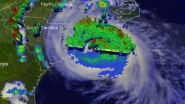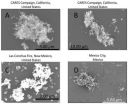(Press-News.org) This news release is available in French.
Scientists at the Montreal Neurological Institute and Hospital, McGill University and McGill University Health Centre have shown that a member of the protein family known as SUMO (small ubiquitin-like modifier) is a key to why tumour cells multiply uncontrollably, especially in the case of glioblastoma. The SUMO family proteins modify other proteins and the SUMOylation of proteins are critical for many cellular processes. Identifying SUMO's role in the cancer cell growth will lead to a new strategy for glioblastoma treatment.
Glioblastoma is the most common and lethal brain cancer. Current standard treatments include surgical resection, adjuvant chemotherapy and radiotherapy. Despite the treatments, patients' survive about a year and half. The cancer continues growing in part due to the presence of the cancer stem cells. It is critical to understand cancer growing pathways in the stem cells for development of stem cells targeted therapies.
The molecular mechanisms that control cancer growth through cell cycle progression, involve a whole host of proteins and many aspects of this complex process are still unknown. One group of proteins termed cyclin-dependent kinases (CDKs) drive the cell cycle; yet, it is unclear why the cancer cells maintain a large amount of CDK proteins.
"In investigation of the cell cycle of human glioblastoma, we uncovered that CDK6 is modified by SUMO1.CDK6 sumoylation inhibits its degradation and thus stabilizes CDK6 protein in the cancer," says Dr. Anita Bellail, a researcher at the Montreal Neurological Institute and Hospital, McGill University and McGill University Health Centre, and lead author on the paper published in Nature Communications. Co-authors on the paper include Jeffrey J. Olson of the Department of Neurosurgery at Emory University and Chunhai "Charlie" Hao, Department of Pathology, Montreal Neurological Institute and Hospital at McGill University and McGill University Health Centre.
"We found that CDK6 sumoylation is required for the renewal and growth of the cancer stem cells in glioblastoma. Inhibition of SUMO1 eliminates the stem cells and suppresses the cancer progression."
Their finding adds concrete evidence to recent studies examining sumoylation pathways in human cancer development and progression. With the new understanding of how SUMO affects the cell cycle in cancer stem cells, this group of scientists are currently screening for SUMO1 targeted new drugs for the treatments of human glioblastoma.
INFORMATION:
To read the full article in Nature Communications: http://www.nature.com/ncomms/2014/140623/ncomms5234/full/ncomms5234.html
The Neuro: The Montreal Neurological Institute and Hospital - The Neuro, is a unique academic medical centre dedicated to neuroscience. A research and teaching institute of McGill University, The Neuro forms the basis for the Neuroscience Mission of the McGill University Health Centre. Founded in 1934 by Dr. Wilder Penfield, The Neuro is recognized internationally for integrating research, compassionate patient care and advanced training, all key to advances in science and medicine. Neuro researchers are world leaders in cellular and molecular neuroscience, brain imaging, cognitive neuroscience and the study and treatment of epilepsy, multiple sclerosis and neuromuscular disorders. For more information, please visit http://www.theneuro.com
Scientists find important piece in the brain tumor puzzle
2014-07-07
ELSE PRESS RELEASES FROM THIS DATE:
NASA sees Hurricane Arthur's July fourth fireworks on US East Coast
2014-07-07
VIDEO:
On July 3, NASA's TRMM satellite passed over Arthur and saw intense bands of thunderstorms north of Arthur's well defined eye dropping rainfall at a rate of over 98.4 mm...
Click here for more information.
Hurricane Arthur made landfall in North Carolina on July 3, and today, July 4, it is bringing its own fireworks along the Mid-Atlantic and New England states. Those fireworks were in the form of "hot towers," powerful, high thunderstorms with heavy rainfall that indicate ...
Conclusion of the Lindau Nobel Laureate meeting
2014-07-07
The 64th Lindau Nobel Laureate Meeting ended with a panel discussion entitled "Science for the benefit of mankind" on Mainau Island, Lake Constance, Germany, today." 37 Nobel laureates and more than 600 selected young scientists from 80 countries had participated in the week-long meeting in the Bavarian city of Lindau since last Sunday. A boat trip to Mainau at the invitation of the State of Baden-Württemberg marked the finish of the programme which was devoted to medicine and physiology. In 1895 Alfred Nobel determined in his will that the Nobel Prizes shall be awarded ...
New optogenetic tool for controlling neuronal signalling by blue light
2014-07-07
Institute for Basic Science (IBS), the main organization of the International Science and Business Belt project in South Korea, has announced that a group of researchers, led by professor Won Do Heo, have developed a new technology in the field of optogenetics that can remotely control specific receptors by light. They have named this new technology "OptoTrk" and it has succeeded with neuronal differentiation inducement.
The most significant feature of OptoTrk technology is that it requires only light to activate neuronal functions without the need of other substances. ...
Perspective of the PandaX dark matter experiment
2014-07-07
The PandaX experiment of China, which is located in the deepest underground laboratory, has released its technical design report recently. The full article will appear in SCIENCE CHINA Physics, Mechanics & Astronomy, 2014, 57(8): 1476-1494.
The Particle and Astrophysical Xenon (PandaX) collaboration was established in 2009 and mainly supported by the Ministry of Science and Technology, the Ministry of Education in China, the Natural Science Foundation of China,and Shanghai Jiao Tong University. The experiment is suitable for both direct dark matter detection ...
New type of soot particle discovered from wildfire emissions
2014-07-07
RENO – Every year, wildfires clear millions of hectares of land and emit around 34-percent of global soot mass into the atmosphere. In certain regions, such as Southeast Asia and Russia, these fires can contribute as much as 63-percent of regional soot mass.
In a paper published in Nature Scientific Reports, a team of scientists led by Rajan Chakrabarty from Nevada's Desert Research Institute report the observation of a previously unrecognized form of soot particle, identified by the authors as "superaggregates," from wildfire emissions. These newly identified particles ...
Blocking cells' movement to stop the spread of cancer
2014-07-07
Insights into how cells move through the body could lead to innovative techniques to stop cancer cells from spreading and causing secondary tumours, according to new UCL research.
Scientists discovered that cells can change into an invasive, liquid-like state to readily navigate the narrow channels in our body. This transformation is triggered by chemical signals, which could be blocked in order to stop cancer cells from spreading.
Most cancer deaths are not due to primary tumours, but to secondary tumours in vital organs, such as the lungs or brain, caused by cells ...
Do you look infected? Should I kill you? No, I'm fine, move along
2014-07-07
Some viruses can hide in our bodies for decades. They make 'fake' human proteins that trick our immune cells into thinking 'everything is awesome', there's nothing to see here.
Now researchers at the Imaging Centre of Excellence at Monash and Melbourne Universities have determined the basic structure of one of the two known families of these deceptive proteins.
Using synchrotron light and working with a common virus that lives in people happily and for the most part harmlessly, they worked out the structure of the fake proteins. This is an important first step towards ...
NUS researchers discover novel protein complex with potential to combat gastric cancer
2014-07-07
A team of scientists from the Cancer Science Institute of Singapore (CSI Singapore) at the National University of Singapore (NUS) discovered that a protein named IL23A is part of our stomach's defence against bacterial infection which leads to gastric cancer. This finding could potentially be used to combat the deadly disease.
The research group, led by Professor Yoshiaki Ito, Senior Principal Investigator at CSI Singapore, also showed that the production of IL23A by stomach cells requires the tumour suppressor gene, RUNX3, which is frequently silenced in gastric cancer. ...
Water bonus flows from climate change measures
2014-07-07
The equivalent of one-third of Melbourne's water use could be saved each year through the implementation of efficiency measures that deal with climate change, according to a new study.
Researchers at the Monash Sustainability Institute analysed the water-saving potential of 74 options for reducing greenhouse gas emissions identified in ClimateWorks Australia's award-winning Low Carbon Growth Plan for Australia. The research was published this week in Springer's international journal Climatic Change.
Monash University Research Fellow Dr Philip Wallis said an analysis ...
First cancer immunotherapy for dogs developed
2014-07-07
As in humans, cancers in dogs have complex causes. The interaction of the environment, food, and genetic disposition are the most well known factors. Today nearly all methods of human medicine are basically available for dogs with cancer, but this was not true of cancer immunotherapy so far.
So-called cancer immunotherapy - which is the treatment of tumors by the use of antibodies - has been established and used very successfully in human medicine for about 20 years. Since cancer cells bear very specific antigens on the surface, the corresponding antibodies bind to these ...




